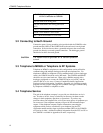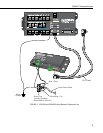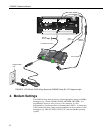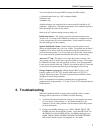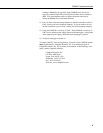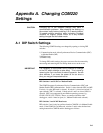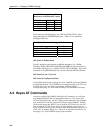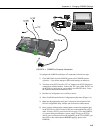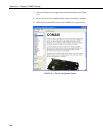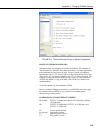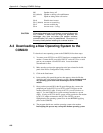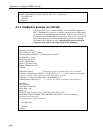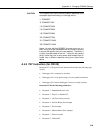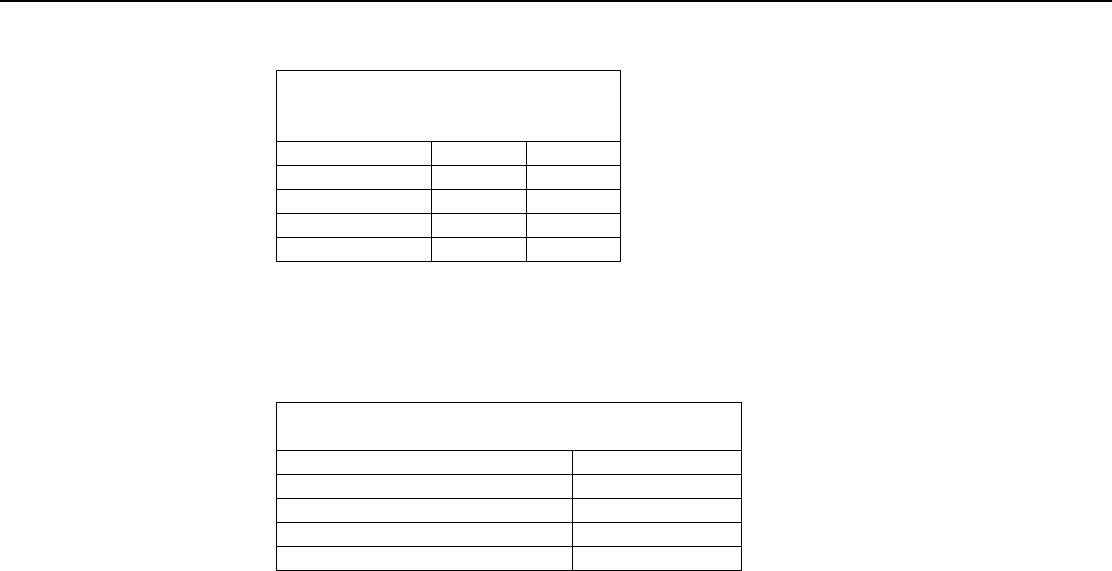
Appendix A. Changing COM220 Settings
TABLE A-1. Selecting ME
Baud-rates via DIP Switches 3 and 4
ME Baud-rate Switch 3 Switch 4
9600 Open Open
38400 Open Closed
57600 Closed Open
115200 Closed Closed
Please note that older dataloggers (e.g. CR10X, CR23X, CR510) cannot
support the highest COM220 ME baud-rates. Table A-2 lists maximum
datalogger baud-rates.
TABLE A-2. Maximum Datalogger ME Baud-rates
Datalogger Max Baud-rate
CR10X, CR510, CR7, CR21X 9600
CR23X 38400
CR5000 57600
CR800, CR1000, CR3000 115200
DIP Switch 5: PakBus Ready
Switch 5 should be open (default) for PakBus dataloggers (e.g., CR800,
CR1000, CR3000, CR10XPB, CR23XPB, CR510PB), but must be closed for
non-Pakbus dataloggers (e.g., CR10X, CR23X, CR510, CR5000). This switch
determines if the clock/handshake line is used to detect the ME-PAUSE state.
DIP Switches 6 and 7: Not used
DIP Switch 8: Configuration Mode
Closing DIP switch 8 (and cycling power to the COM220) places the COM220
in configuration mode. The COM220 can be configured using an SC532 or an
SC532A with a 12V AC adapter (part number 15966) and Device
Configuration utility ver 1.6 or newer and Hayes AT Commands (see below).
A.2 Hayes AT Commands
In order to configure the COM220 with Hayes AT commands, you will need
the Campbell Scientific Device Configuration utility ver 1.6 or newer and a
SC532 or SC532A device. An SC12 cable must be connected to the peripheral
port on the SC532 or SC532A and the CS I/O port on the COM220. Another
cable should connect the “RS232” port (if using an SC532 device) or the “PC”
port (if using an SC532A device) to one of your computer's serial ports. If
using an SC532A device, power will be provided to the modem by the SC532A
with a 12V AC adapter (Figure A-1). However, if using the older SC532, you
must apply 12 V to the COM220 via the green connector.
A-2



